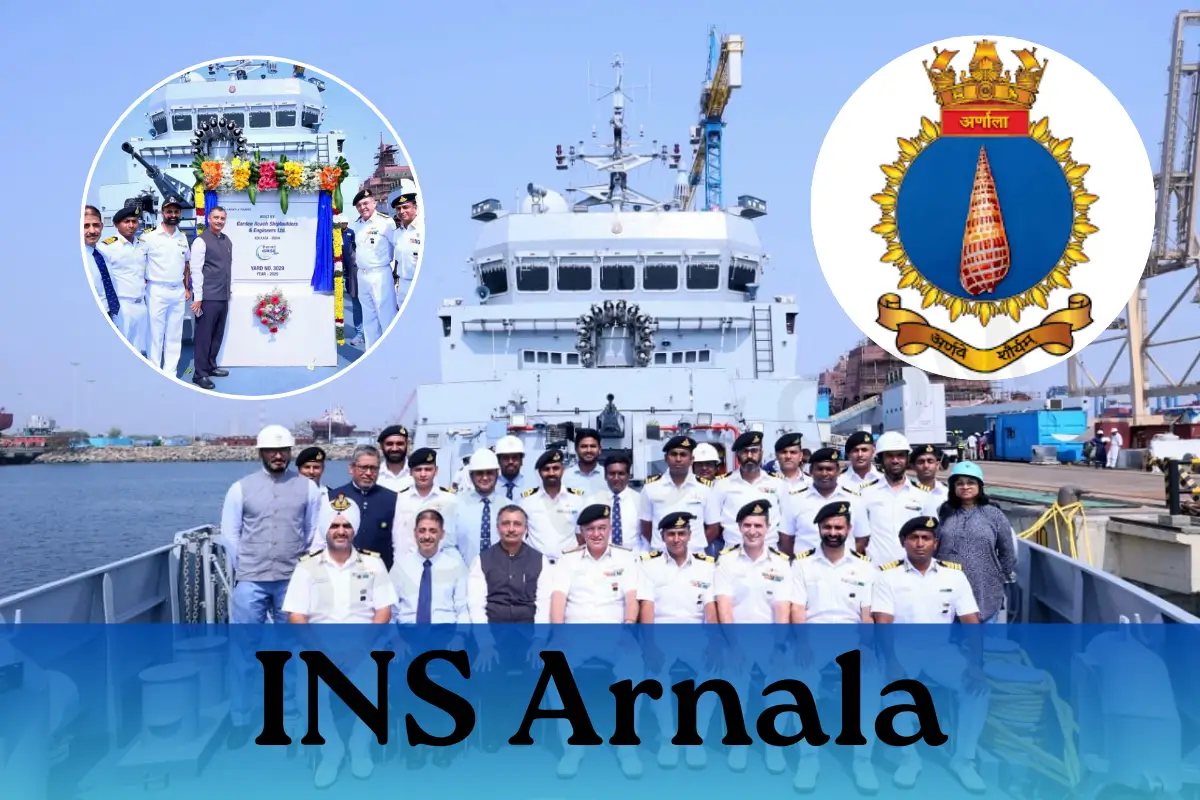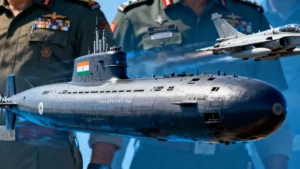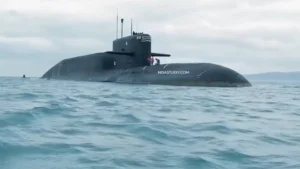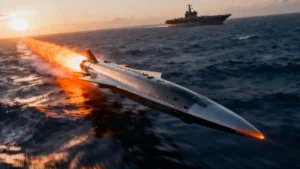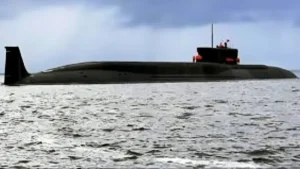As India faces growing challenges in maritime security along its extensive 7,500-kilometre coastline, the INS Arnala, commissioned on June 18, 2025, marks a pivotal moment for the Indian Navy. This year, the Navy will introduce a record 10 warships, significantly enhancing its capabilities. The INS Arnala, measuring 77 meters and weighing 1,490 tons, is the largest Indian naval warship powered by a diesel engine and waterjet combination. It also represents India’s first indigenous Anti-Submarine Warfare Shallow Water Craft (ASW-SWC), a crucial step in effectively addressing the growing underwater threats.
With over 80% indigenous content and the collaboration of more than 55 Indian MSMEs, INS Arnala serves as a powerful symbol of the ‘Aatmanirbhar Bharat’ vision. It incorporates advanced systems from prominent companies such as Bharat Electronics Limited, L&T, Mahindra Defence, and MEIL. The ship was commissioned in a ceremony presided over by Chief of Defence Staff General Anil Chauhan. As the first of sixteen ASW-SWC class ships, INS Arnala marks a new chapter in coastal defence and reaffirms India’s commitment to self-reliance in critical defence technology.
INS Arnala Commissioned: Key Details and Features
INS Arnala, commissioned today, June 18, 2025, marks a significant advancement in India’s coastal defence capabilities. Specifically designed for anti-submarine warfare in shallow waters, this state-of-the-art vessel is equipped with a range of cutting-edge features and capabilities. Here’s a concise overview of INS Arnala, commissioned to elevate maritime security:
| Feature | Details |
|---|---|
| Length | 77 meters |
| Displacement | 1,490 tonnes |
| Maximum Speed | 25 knots |
| Crew Capacity | 57 (including 7 officers) |
| Endurance | 1800 nautical miles at 14 knots |
| Armament | Operates efficiently in shallow waters, high manoeuvrability, and a low acoustic signature (stealth) |
| Sensors & EW Suite | Advanced hull-mounted sonar, electronic warfare systems, integrated combat suite |
| Unique Capabilities | Operates efficiently in shallow waters, high manoeuvrability, and low acoustic signature (stealth) |
| Indigenous Content | Over 80%, with major Indian defence firms involved |
What makes INS Arnala unique?
- Its shallow draft and advanced sonar enable detection and neutralisation of submarines close to the coast.
- Stealth features and agility make it a formidable asset for protecting ports, naval bases, and vital sea lanes.
- The ship’s systems are designed for seamless integration with India’s network-centric naval operations.
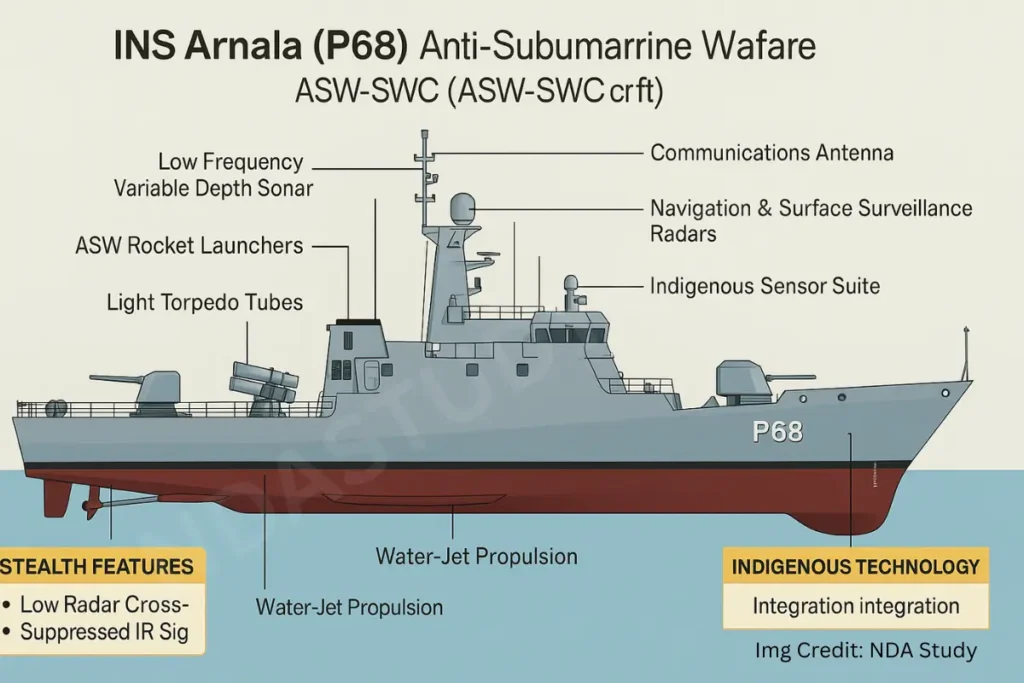
INS Arnala’s optimised design and indigenous technology make it a true game-changer for India’s maritime security, ensuring rapid response and robust defence in the nation’s most vulnerable coastal zones.
Latest Navy Deal: India’s ₹63000 Crore Rafale Marine Deal 2025: Delivery Timeline, Specs & full Details Exposed
Indigenous Technology and ‘Make in India’ Push
INS Arnala represents a significant milestone in India’s pursuit of defence self-reliance, showcasing the effectiveness of indigenous design and collaborative shipbuilding. Developed at Garden Reach Shipbuilders & Engineers (GRSE) in Kolkata, in partnership with L&T Shipyard in Kattupalli, INS Arnala was created under a strong Public-Private Partnership (PPP) model. This collaboration harnessed the expertise of Indian shipyards along with oversight from the Directorate of Ship Production and Warship Overseeing Teams, ensuring that world-class standards were maintained at every stage of the process.
Key Indian Companies and DRDO’s Role
The ship features over 80% indigenous content, incorporating advanced systems and equipment from prominent Indian defence companies such as Bharat Electronics Limited (BEL), L&T, Mahindra Defence, and MEIL. More than 55 Indian MSMEs provided essential components for the project, while the Defence Research and Development Organisation (DRDO) played a crucial role in developing cutting-edge sonar, electronic warfare, and combat management systems.
| Company/Agency | Role/Contribution |
|---|---|
| Garden Reach Shipbuilders & Engineers (GRSE) | Lead design and construction |
| L&T Shipyard, Kattupalli | Construction partner, propulsion systems |
| Bharat Electronics Limited (BEL) | Sensors, communication, electronic warfare systems |
| Mahindra Defence | Defence equipment and integration |
| MEIL (Megha Engineering & Infrastructures) | Engineering support and systems |
| DRDO | Indigenous sonar, EW suite, and combat systems |
| 55+ Indian MSMEs | Sensors, communication, and electronic warfare systems |
Symbol of Self-Reliance
INS Arnala represents a national milestone in India’s defence sector. By collaborating with over 55 Indian MSMEs and sourcing most components domestically, the project has boosted economic activity and strengthened the defence industrial base. Its indigenous content and advanced capabilities highlight the Atmanirbhar Bharat initiative, aiming to reduce reliance on foreign suppliers and enhance security in the Indian Ocean Region. This collaboration of public and private expertise, along with DRDO’s innovations, sets a benchmark for future indigenous naval projects and symbolises India’s self-reliant maritime future.
Also Read:
- India’s Defence Corridors 2025: The Truth No One’s Telling Yet
- India’s Defence Sector in 2025: Progress, Challenges & The Road Ahead[ Exposed ]
- How India’s Defence Budget Is Set to Double by 2030 [Expert Analysis]
Strategic Importance for Coastal Defence
India’s coastal security is currently facing unprecedented underwater threats. Since 2020, Chinese submarine activity in the Indian Ocean Region (IOR) has doubled, with advanced Yuan-class and Jin-class submarines frequently detected near Indian waters. The Bay of Bengal and the Ninety East Ridge, both vital to India’s maritime interests, have experienced an increase in foreign submarine traffic and “research” missions. This raises concerns about covert mapping and intelligence-gathering activities in these areas.
INS Arnala, commissioned in 2025, is India’s first indigenous Anti-Submarine Warfare Shallow Water Craft (ASW-SWC). Its shallow draft and advanced sonar enable it to detect submarines near the coast, protecting India’s ports and economic zones, crucial for securing over 60% of the country’s trade and vital infrastructure.
India previously relied on a few conventional submarines and imported anti-submarine warfare (ASW) assets, which were insufficient for effective coastal defence. The arrival of INS Arnala, featuring over 80% indigenous content and DRDO-developed systems, marks a significant strategic advancement. It integrates with India’s underwater sensor network and Maritime Domain Awareness (MDA) systems, enabling real-time detection and rapid response to hostile submarines.
By deploying INS Arnala and similar indigenous platforms, India not only strengthens its coastal defence but also advances self-reliance, ensuring security in an era of intensifying undersea competition and regional power projection.
NDA Study
CDS Gen Anil Chauhan’s Role and Statements
Chief of Defence Staff (CDS) General Anil Chauhan’s attendance at the commissioning of INS Arnala underscored India’s commitment to indigenous naval development. He highlighted that INS Arnala enhances maritime security and represents a key success for the Atmanirbhar Bharat initiative, promoting self-reliance in defence technology. General Chauhan praised the collaborative efforts of Indian shipyards, the Defence Research and Development Organisation (DRDO), and over 55 micro, small, and medium enterprises (MSMEs), stating these partnerships are vital for a technologically advanced naval force.
He emphasised the need for innovative, homegrown solutions to address modern threats in the Indian Ocean Region and outlined a vision for future naval modernisation centred on indigenous technology and rapid capability enhancement. His message is clear: India’s maritime strength depends on local innovation and collaborative efforts.
Relevance for NDA/Defence Exams
INS Arnala is significant for NDA and other defense exams as India’s first indigenous Anti-Submarine Warfare Shallow Water Craft, commissioned on June 18, 2025, at Visakhapatnam. Key details include over 80% indigenous content, construction by GRSE and L&T Shipyard, and the involvement of more than 55 Indian MSMEs, reflecting the Atmanirbhar Bharat initiative.
It is 77 meters long, has a displacement of 1,490 tonnes, and features diesel engine-waterjet propulsion, serving essential roles in anti-submarine warfare, mine-laying, and coastal surveillance. INS Arnala replaces older Abhay-class ships, enhancing India’s ability to counter underwater threats. Understanding its development and strategic role can help candidates succeed in current affairs and defense awareness sections of exams.
Expert Perspectives and Future Outlook
Naval experts widely consider the commissioning of the INS Arnala to be a transformative step for India’s maritime security. Defence analyst Commodore (Retd) Anil Jai Singh states, “The indigenous design of INS Arnala and its advanced anti-submarine warfare (ASW) capabilities represent a significant shift in our ability to address underwater threats near the coast.” The successful integration of over 80% indigenous content, along with collaboration with more than 55 Indian MSMEs, not only strengthens India’s defence ecosystem but also sets a strong precedent for future indigenous warship projects.
Experts believe that the Arnala-class will boost India’s ambitions to design, build, and export advanced naval platforms, enhancing the country’s role as a regional security provider. With a high demand for shallow water anti-submarine warfare (ASW) vessels among Indian Ocean littoral states, the success of INS Arnala could lead to new export opportunities and promote greater regional cooperation. For defence enthusiasts and industry observers, this commissioning signifies India’s increasing self-reliance and leadership in next-generation naval technology.
Author’s words
At NDA Study, we believe the INS Arnala Commissioned 2025 is a proud milestone for India’s naval self-reliance. This indigenous vessel, built with over 80% local content and advanced systems from Indian companies and DRDO, not only strengthens our coastal defence but also showcases the power of Atmanirbhar Bharat in action. The commissioning of this warship opens the door for more indigenous warship projects. It also establishes India as a leader in maritime innovation. This development holds promising prospects for regional security and defence exports.
Stay Tuned & Stay Connected!
